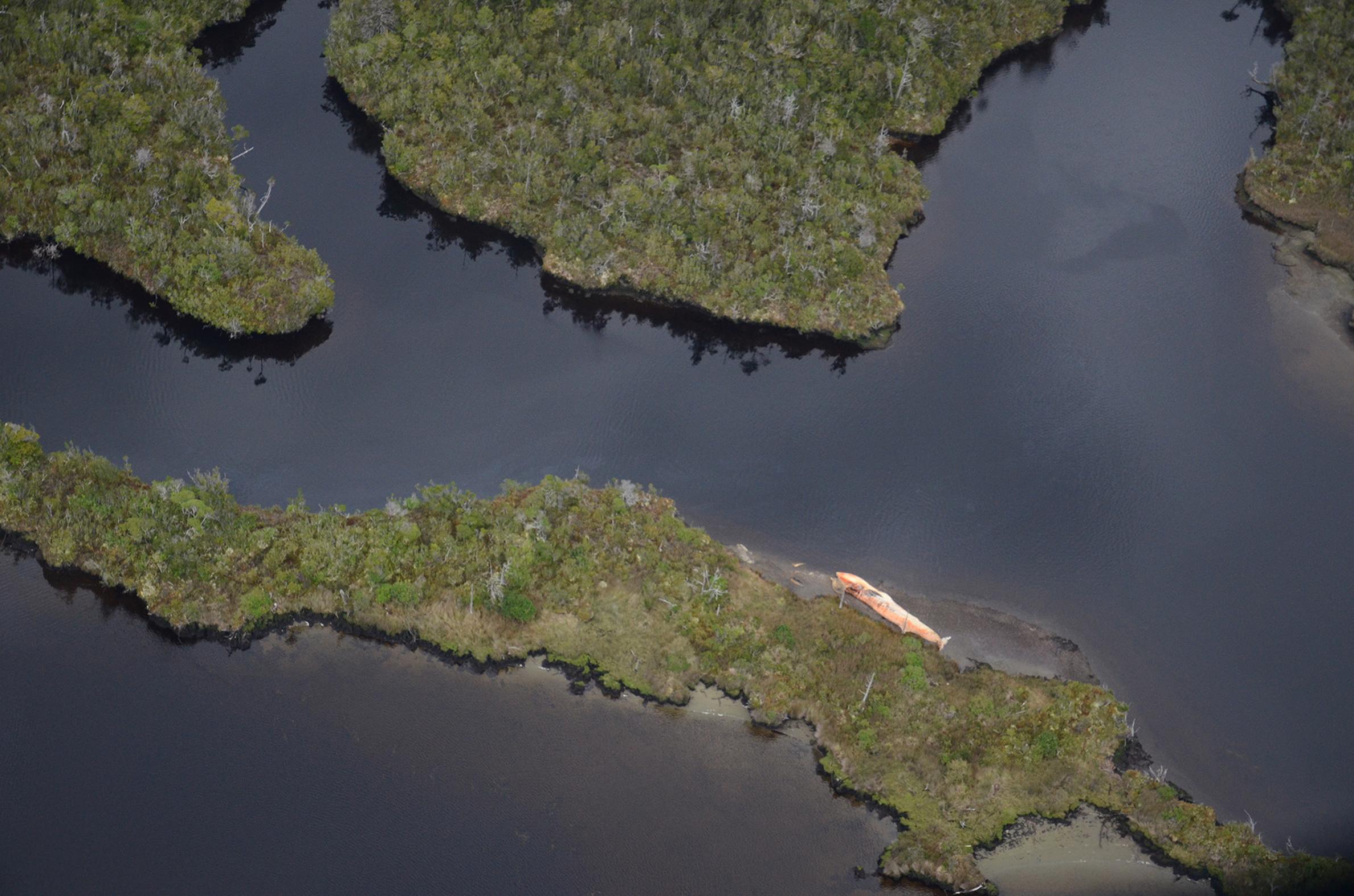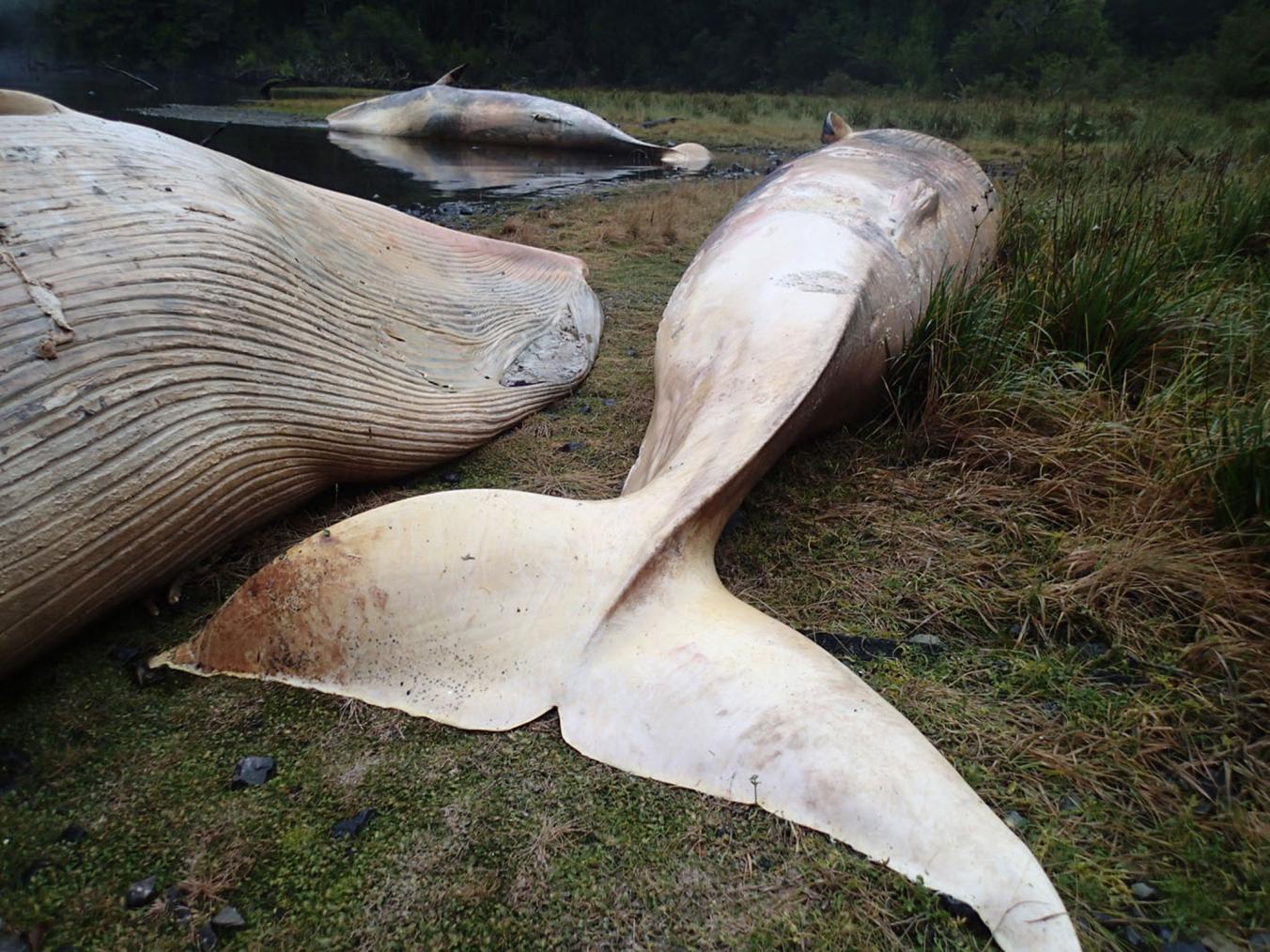Scientists made a startling discovery on an observation flight over a remote fjord in southern Chile's Patagonia: 337 dead whales. That is the biggest single whale stranding event known to science.
Because of the remoteness of the area and the roughness of the seas, scientists have not been able to examine the whales directly, but aerial and satellite photography identified 305 bodies and 32 skeletons in an area between the Gulf of Penas and Puerto Natales, toward the southern tip of the continent.
Many of the remains were in advanced states of decay so it's unclear what species they are, says lead scientist Carolina Simon Gutstein of the Universidad de Chile and Consejo de Monumentos Nacionales in Santiago. But based on their size and location, they are probably sei whales, she says.
Endangered throughout its range, sei whales are large, bluish-gray baleen whales that filter the water to feed on krill and other small creatures. They can reach 64 feet (19.5 meters) long and 50 tons. Considered the fastest cetacean, sei whales can swim at speeds up to 31 miles (50 kilometers) per hour. Their lifespan is 50 to 70 years, and they are usually found in deep waters far from coastlines. The worldwide population is estimated at about 80,000.
Gutstein and colleagues actually made the discovery on June 23, with support for the observation flights provided by the National Geographic Society Waitt Grants Program. The team is analyzing its findings for publication in a scientific journal, but the story leaked Friday in the Chilean press. "We are planning on going back there in the summer to try to study them more closely," says Gutstein.

Thirty sei whales were seen stranded in the same general area in April by Vreni Häussermann of the Huinay Scientific Field Station. That prompted Gutstein and Häussermann to team up, pool resources, and to look further with flights and remote imagery (the pair made the discovery jointly on June 23, with the Institut de Ecologia y Biodiversidad). (Learn how people can help stranded whales.)
The scientists are still trying to figure out what caused the die-off, and the Chilean government has launched an investigation since whales are protected there. Gutstein did not want to speculate on the cause of death but in the past red tides (blooms of toxic microorganisms) have been blamed for whale deaths in the region. Red tides can be caused or exacerbated by nutrients from sewage and fertilizer, although it's often "very difficult to find one person or corporation culpable," says Gutstein.
The status of whales off Chile is poorly known, she adds. "We know some about how many have died now but how many are alive? We don't know," she says. "We don't have much data."
Toxic blooms may have been the culprit in mass death of marine mammals off Chile three to five million years ago, according to another National Geographic explorer. That evidence was found by Nicholas Pyenson of the Smithsonian in a fossil bed in Chile's Atacama Desert.
About fifteen years ago, some 600 gray whales were stranded on the North American Pacific Coast from Alaska to Mexico, but that occurred over a vast area and over a longer span. In Patagonia, the whales were found close together. Nearly 200 whales were stranded in New Zealand in February.




Biggest mass beaching known to humanity, not science.